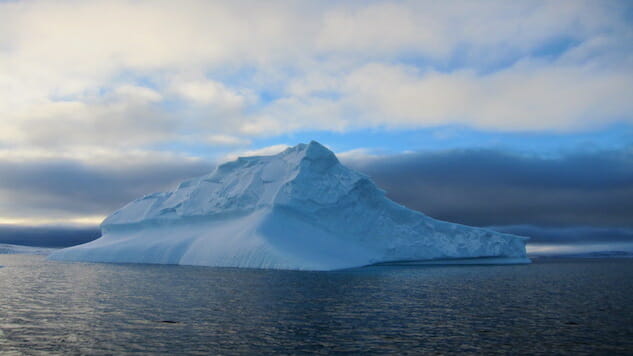Warming Signs: Arctic Melt Reaches Around the Globe

Often, when we talk about climate change, it seems like a far-off scenario. We talk in terms of saving the planet for future generations and predict disruptive sea level rise within the century. But the effects of climate change are already felt around the world; future changes will only intensify them.
![]()
A few days before Christmas, temperatures near the North Pole reached a melting point of around 32 degrees Fahrenheit—more than 40 degrees above average.
Andrew King, a researcher at the University of Melbourne who has examined the links between Arctic melt and climate change, called the warm bout a “roughly one in a 200 year event.” Translation: the intensity is extremely rare, and very unlikely to have occurred without human-induced climate change. Yet these extremely rare events, scientists say, are becoming the new normal. Some even predict that the ice around the North Pole will disappear in the next two years.
The unprecedented temperatures are a bellwether for how climate change will affect the rest of the world in the next few decades. But they’re also an indication that these changes are happening right now, and affecting weather all over the globe.
The Arctic is a key battleground in climate change research for a number of reasons. One is something called the albedo effect. It’s the same logic behind wearing a white t-shirt on a hot day instead of a black one. Dark colors absorb the sun’s rays, making you hotter when you’re wearing black; lighter colors reflect the rays, keeping you cool. It’s the same with the earth. If swaths of it are covered in light colors—because of ice formations in Antarctica or glaciers in Peru—the rays bounce back into the atmosphere. But when that ice melts, revealing darker earth beneath, the heat is instead absorbed.
So the absence of ice, even without other problems that ice melt causes, will expose the earth to even more heat.
Scientists also worry about Arctic melt because of what exactly is trapped in all of those ice layers. NASA estimates that there are 1.7 trillion metric tons of carbon locked into permafrost (or the permanently frozen ground) in the far North—”more than twice the carbon currently in the atmosphere”—and that permafrost is melting away, releasing its stored carbon.
But perhaps the biggest effect—and the easiest for us non-Arctic dwellers to see—is how the ice melt affects extreme weather events.
A recent report from the experts participating in the Arctic Council found as many as 19 “tipping points,” or triggers for change, that begin in the Arctic and spread around the globe—from an increase in the albedo effect to changed climate patterns in the monsoon seasons of Asia.
As the saying up north goes, “What happens in the Arctic doesn’t stay in the Arctic.” If the Arctic is the earth’s air conditioner, climate change is pulling the plug—and the whole world will feel the heat.
-

-

-

-

-

-

-

-

-

-

-

-

-

-

-

-

-

-

-

-

-

-

-

-

-

-

-

-

-

-

-

-

-

-

-

-

-

-

-

-









































